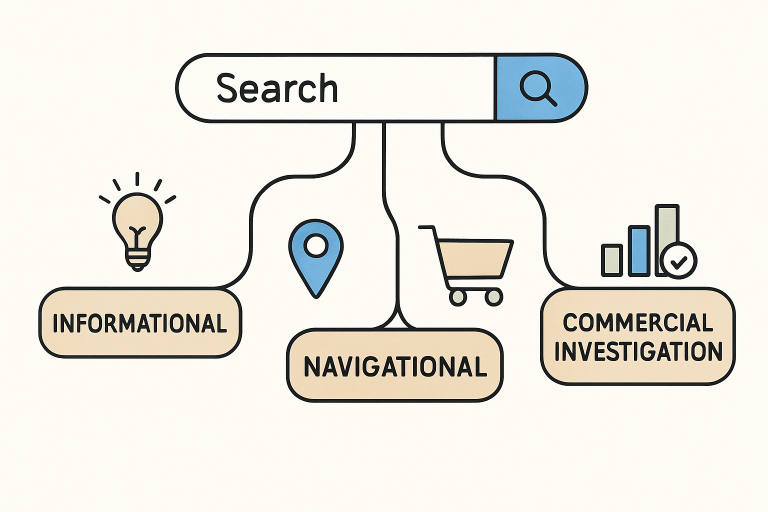Key Takeaways
- Search intent lies at the heart of today’s most effective SEO practices.
- Understanding user journeys allows content creators to deliver precisely what users seek.
- Modern keyword research now factors in intent, not just search volume.
- Tools and techniques for intent analysis are becoming more sophisticated and accessible.
- Practical examples show how matching content to intent improves rankings and engagement.
- Search engines are evolving rapidly to prioritize intent-driven results.
- Actionable steps help marketers adapt their strategies now for future success.
In the rapidly evolving world of digital marketing, understanding what your audience truly wants has become more critical than ever. Modern search engines prioritize content that satisfies user intent—delivering answers, solutions, or guidance that directly aligns with the reasons behind a search query. For marketers, this shift means that successful content strategies go beyond targeting keywords; they must anticipate user needs and provide meaningful, actionable experiences.
Marketers can create content that resonates, ranks higher in search results, and drives engagement across multiple channels by focusing on search intent. This approach improves organic visibility and builds trust and authority with audiences. In this article, we’ll explore how analyzing and applying search intent can reshape content strategies, ensuring that every piece of content aligns with user expectations and delivers measurable results.
What is Search Intent and Why Does it Matter?
Search intent defines the underlying purpose behind every query a user enters into a search engine. Whether the objective is to purchase, gather information, locate a specific site, or solve a unique challenge, understanding intent is crucial. Today, content that aligns with user intent outperforms generic keyword-focused pieces in engagement and rankings. Leveraging keyword research services enables marketers to accurately pinpoint the “why” behind user queries, delivering relevant and timely solutions that nurture audience trust.
This focus on intent has become the backbone of modern SEO and digital marketing. When content meets the user’s needs—be it through quick answers, comprehensive guides, or targeted product offerings—it gains favor with both users and search engines. As Google and other platforms evolve, prioritizing intent ensures content is indexed accurately and stands out in increasingly competitive digital spaces.
Recognizing the types of search intent is critical for effective content creation. Marketers must distinguish between informational, navigational, transactional, and commercial investigation intents to tailor their strategies appropriately.
Ignoring the primary intent behind a search leads to content that fails to connect with its intended audience. Recognizing and fulfilling the real needs expressed through queries is key to building lasting engagement and brand loyalty.
Content strategy has shifted significantly in response to intent-focused searches. Brands now start by examining user motives, not just keyword lists. Take the growing popularity of “how-to” searches: Successful marketers recognize these as predominantly informational and respond with detailed, actionable guides or videos rather than sales pitches.
This change means that content calendars and editorial plans must be rooted in solving real problems for users. Instead of centering on blunt keyword stuffing, teams aim to provide in-depth, authentic answers to users’ specific challenges and curiosities.
Keyword Research is Evolving with Intent
The era of keyword selection guided purely by search volume is fading. Today’s approach clusters keywords by intent, allowing for smarter groupings based on what users want to achieve, rather than raw traffic numbers. By analyzing the landscape using sophisticated tools, marketers can organize content around needs and priorities—boosting click-through rates, conversions, and retention.
For an in-depth breakdown of how keyword intent changes the industry. The modern approach ensures that every piece of content has a clear purpose directly tied to user expectations.
Real-Life Examples of Intent-Driven Content Success
Many companies have experienced breakthrough results by realigning their content with user intent. For example, a DIY-themed site that previously struggled for visibility saw a surge in organic visits after pivoting to step-by-step tutorials around targeted intent-driven topics, such as “how to repaint kitchen cabinets.” Addressing their audience’s precise concerns and goals led to dramatic improvements in engagement and SERP rankings.
Likewise, e-commerce brands attuned to transactional and commercial investigation queries saw higher-quality leads and increased conversion rates when product pages addressed common pre-purchase questions and highlighted differentiators.
How Search Engines Are Becoming Intent-First
Google and its peers have made significant algorithmic leaps to better decipher and satisfy search intent. Technologies like natural language processing (NLP), machine learning, and semantic search allow platforms to evaluate keywords, meaning, context, and even search history. This intent-first paradigm means marketers who neglect intent risk declining relevance and visibility as search engines raise the bar on matching content to user expectations.
Leaning into intent-aligned content is no longer optional; it’s necessary for those aiming to future-proof their SEO and digital marketing strategies.
Steps for Aligning Content With User Intent
- Leverage advanced tools to research keywords while also categorizing them by likely intent.
- Analyze the top-ranking pages for your target queries—note the formats, structures, and tones that perform best.
- Map out the visitor journey from search to conversion, identifying intent at each stage.
- Develop new content (or update existing content) to address each target intent’s specific questions and needs.
- Measure results by tracking user engagement, bounce rates, dwell time, and SERP performance, then refine content based on real user data.
Looking Forward: Prioritizing Value for Readers
With search engines and users gravitating toward intent-based results, success hinges on providing genuine value. Leading marketers and content specialists deeply understand user journeys and respond with content that is both discoverable and useful. By integrating a focus on search intent into strategic planning, brands can foster loyalty, increase visibility, and prepare for continued evolution in digital discovery.

